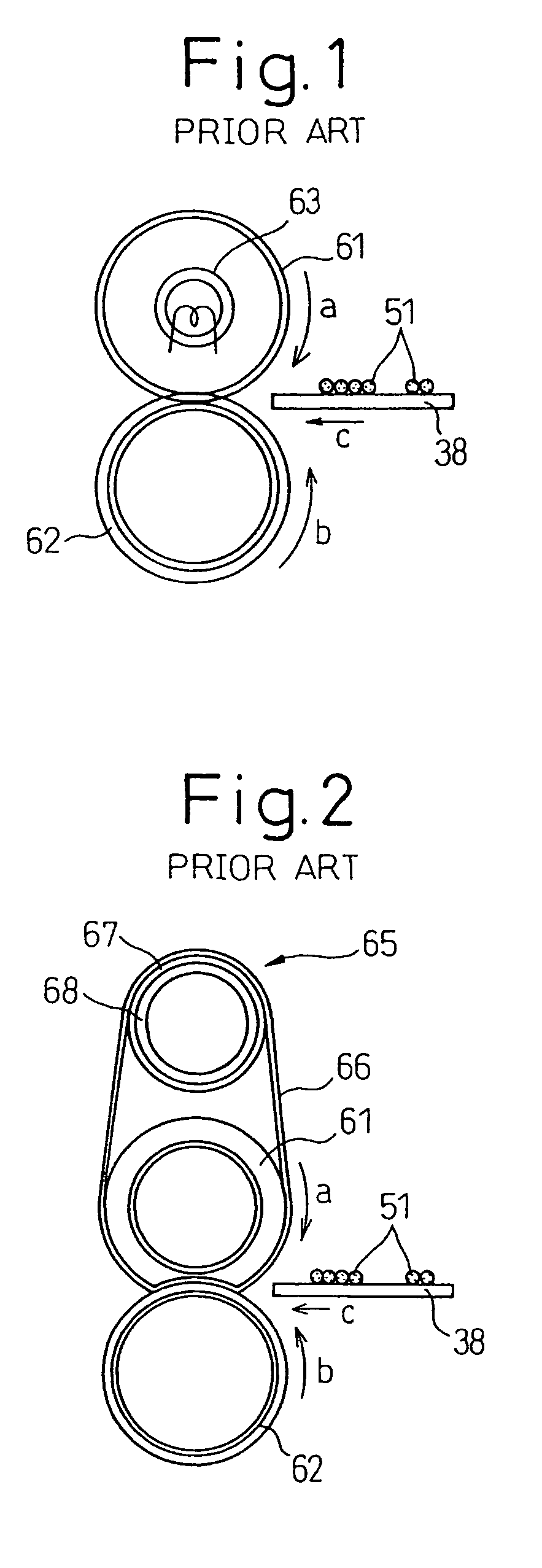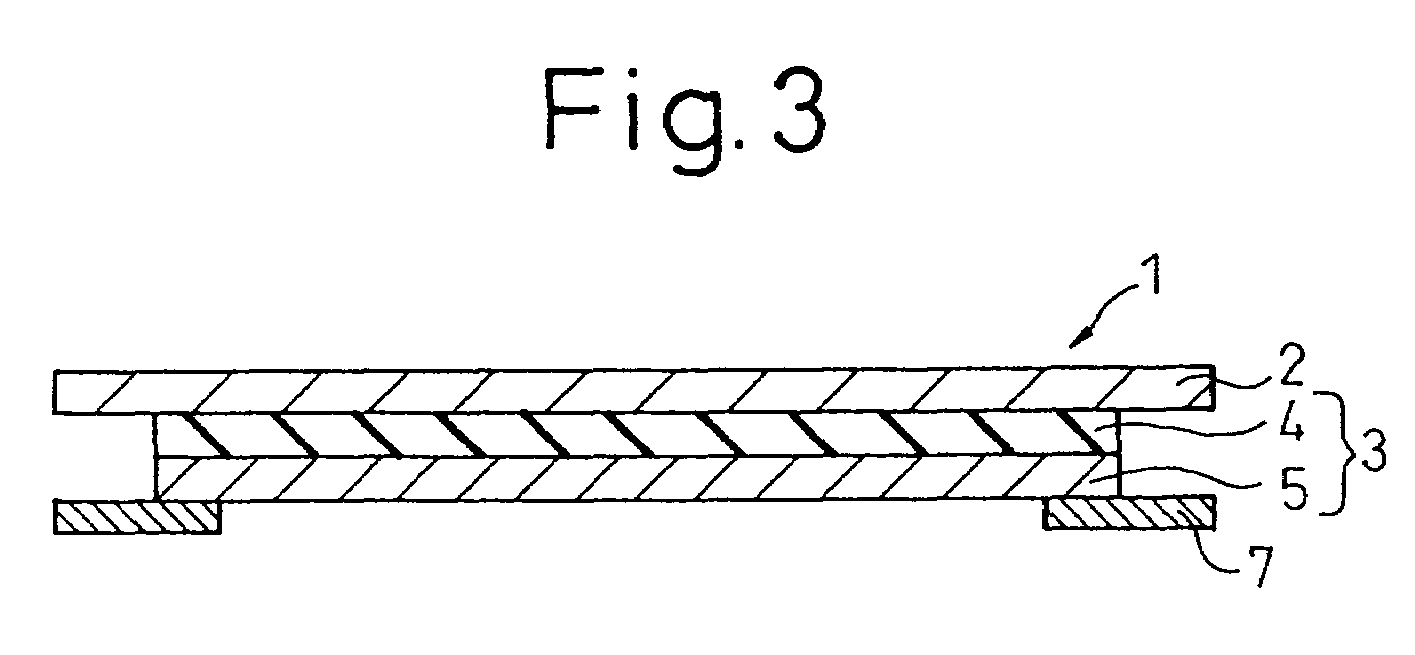Heat plate, heating element, belt type fixing device and image forming apparatus
a technology of fixing device and heat plate, which is applied in the field of fixing technology, can solve the problems of reliability and durability, the durability of the heating resistor layer, and the method of forming the quick heat roller, and achieve the effects of quick heating, quick heating and heat several times faster
- Summary
- Abstract
- Description
- Claims
- Application Information
AI Technical Summary
Benefits of technology
Problems solved by technology
Method used
Image
Examples
first embodiment
[0081]FIG. 4A is a longitudinal sectional view showing an outline of the heat plate for fixation according to the present invention. On the reverse face of the metallic base plate 12, there is provided a heating resistor 13 which is composed of a heat transmission strengthening layer 14, heating resistor layer 15 and protective layer 16. At both end portions of the heating resistor layer 15, there are provided electrode layers which are represented by reference numeral 17 in the drawing. The lead-in terminals 17 are connected to the electrode layers. The lead-in terminals 17 are connected to an electric power source not shown in the drawing.
[0082]The metallic base plate 12 is a member for conducting heat to the endless belt for fixation described later. This metallic base plate 12 is composed of an aluminum plate, nickel plate, galvanized sheet iron and the like. A reverse side of the metallic base plate 12, which comes into contact with the heating resistor 13, is fabricated to hav...
third embodiment
[0109]In this third embodiment, the heating resistor 13 has a laminar structure composed of a heat transmission strengthening layer 14, temperature control type heating resistor layer 19, heat transmission strengthening layer 20, heating resistor layer 15, heat insulation strengthening layer 21, heat reflecting layer 22 and protective layer 16 which are laminated. In the production of this heating resistor 13, the screen printing method can be most appropriately applied.
[0110]Especially, it is preferable that the temperature control type heating resistor layer 19 is made of resistor material, the temperature coefficient of which is positive. Concerning the resistor material, the temperature coefficient of which is positive, it is possible to use the primary resistor materials described before, and also it is possible to use a single metal such as Ge, Si or Zn or SnZn alloy or Y3FeO12 as auxiliary materials. Depending upon the characteristic of the positive temperature coefficient, w...
fourth embodiment
[0116]As shown in the drawing, in the fourth embodiment, the sections of the heating resistor layer 18 and the temperature control type heating resistor layer 23 are composed in such a manner that the layer thickness of the central portion is larger than that of the lead-in terminal portion. Due to the foregoing, the temperature distribution of the heating member can be maintained uniform.
[0117]Since the temperature coefficient of the temperature control type heating resistor layer 23 is negative, when the temperature of the heating resistor layer 18 is locally raised, the resistance is lowered and the heating electric power is reduced, so that the temperature of the heating resistor layer 18 is moved to a lower side. In contrast, when the temperature of the heating resistor layer 18 is decreased locally, the resistance is increased and the heating electric power is raised, so that the temperature of the heating resistor layer 18 is moved to a higher side. That is, the temperature c...
PUM
 Login to View More
Login to View More Abstract
Description
Claims
Application Information
 Login to View More
Login to View More - R&D
- Intellectual Property
- Life Sciences
- Materials
- Tech Scout
- Unparalleled Data Quality
- Higher Quality Content
- 60% Fewer Hallucinations
Browse by: Latest US Patents, China's latest patents, Technical Efficacy Thesaurus, Application Domain, Technology Topic, Popular Technical Reports.
© 2025 PatSnap. All rights reserved.Legal|Privacy policy|Modern Slavery Act Transparency Statement|Sitemap|About US| Contact US: help@patsnap.com



